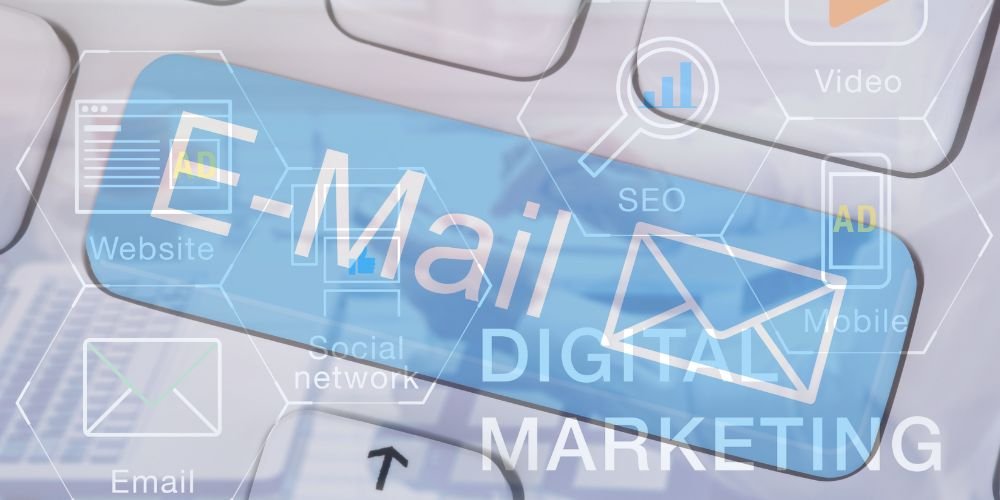Email remains a powerful and cost-effective tool for engaging with your audience in the ever-evolving digital marketing landscape. However, with inboxes flooded with messages, optimizing your email marketing campaigns is essential for cutting through the noise and achieving meaningful results. This comprehensive guide provides insights and strategies to optimize email marketing campaigns for maximum impact and engagement.
Understanding the Importance of Email Marketing Optimization
Email marketing optimization is not a one-size-fits-all approach; it’s about delivering the right message to the right audience at the right time. As customer anticipations continue to evolve, personalized and targeted communication becomes crucial. Optimization ensures that your emails reach the inbox and resonate with recipients, driving higher open rates, click-through rates, and conversions.
Audience Segmentation and Targeting
A deep understanding of your audience is the foundation of any successful email marketing campaign. Segmenting your email index based on demographics, behaviors, or preferences allows for targeted communication. It ensures that recipients receive content relevant to their interests, improving the likelihood of engagement and fostering a more personalized connection.
Personalization and Dynamic Content
Personalization goes beyond addressing recipients by their first name. Leveraging data to create dynamic content that adapts to each recipient’s preferences and behaviors is key. Personalized emails are more likely to capture attention and foster a sense of connection with your brand, leading to improved loyalty and engagement.
Mobile Optimization
Optimizing your emails for mobile is non-negotiable, with many email extensions occurring on mobile devices. Ensure that your email layout, images, and call-to-action buttons are visually appealing on smaller screens and contribute to a seamless mobile experience. A mobile experience enhances engagement and contributes to a positive user experience.
Key Elements of Email Design and Content
Effective email design and content are instrumental in capturing and maintaining your audience’s attention.
Compelling Subject Lines
Craft attention-grabbing subject lines that entice recipients to open your emails. Avoid generic phrases and consider using personalization or creating a sense of urgency to increase open rates. The subject line is the first impression, and making it compelling sets the stage for a successful email.
Clear and Concise Copy
People often skim through emails, so keeping your copy clear, concise, and scannable is crucial. Use short paragraphs, bullet points, and compelling headlines to convey your message efficiently. Be mindful of your tone; it aligns with your brand voice and resounds with your audience.
Engaging Visuals
Incorporate visually appealing elements such as photos, GIFs, and videos to break up text and make your emails more engaging. However, striking the right balance is key; visuals should enhance the message without overwhelming the content. Compelling visuals contribute to a more immersive and memorable email experience.
Strategic Call-to-Action (CTA)
Guide recipients on the desired action with a strategically placed and compelling CTA. Whether purchasing, downloading content, or signing up for an event, a well-crafted CTA increases the likelihood of conversion. Make sure your CTA stands out and aligns with the overall goals of your email campaign.
Optimizing Email Deliverability and Timing
Your meticulously crafted emails won’t yield results if they don’t reach the inbox or are sent at the wrong time.
Maintaining a Clean Email List
Regularly clean and update your email list by removing inactive or bounced email addresses. A clean list improves deliverability and ensures your emails reach engaged recipients. Periodic list maintenance is crucial for maintaining a positive sender reputation.
Authentication and Sender Reputation
Authenticate your emails using SPF, DKIM, and DMARC to verify your identity and protect against phishing. A positive sender reputation is crucial for inbox placement, so consistently deliver valuable content and minimize spam complaints. Building and maintaining a strong sender reputation enhances the likelihood of your emails reaching the inbox.
Optimal Sending Times
Experiment with different sending times to determine when your audience is most responsive. Analyze data to identify patterns in open and click-through rates, allowing you to schedule emails for maximum impact. Timing is an important factor in the success of your email campaigns, and sending emails when your audience is most active improves the likelihood of engagement.
Testing and Analyzing Performance
Continuous testing and analysis are essential for refining your email marketing strategy.
A/B Testing
Conduct A/B tests on elements such as subject lines, visuals, CTAs, and send times. Analyzing the performance of different variations provides a valuable understanding of what resonates best with your audience. A/B testing helps you to refine your approach based on real-world data, improving the effectiveness of your future campaigns.
Mail Analytics
Regularly review email analytics to assess the success of your campaigns. Key metrics include open rates, click-through rates, conversion rates, and unsubscribe rates. Use this data to identify trends, successes, and areas for improvement. Email analytics provide a wealth of information that empowers you to create data-driven decisions and continually optimize your email marketing efforts.
Compliance and Privacy Considerations
Maintaining compliance with email marketing regulations is critical to building trust with your audience.
GDPR and CAN-SPAM Compliance
Ensure compliance with regulations like GDPR and CAN-SPAM. Obtain consent before sending emails, provide clear opt-out options, and respect user preferences regarding data usage. Compliance with these regulations protects your brand from legal implications and fosters trust among your subscribers.
Privacy and Transparency
Be transparent about how you use and protect recipient data. Communicate your privacy policy and assure subscribers that their information is secure. Establishing trust is vital for long-term customer relationships. Articulating your commitment to privacy builds credibility and encourages subscribers to engage confidently with your emails.
Automation for Efficiency and Personalization
Embrace automation to streamline your email marketing processes and deliver personalized experiences at scale.
Drip Campaigns
Implement drip campaigns to send targeted emails based on user actions or predefined triggers. Drip campaigns nurture leads, onboard new subscribers, and re-engage dormant users, enhancing overall customer lifecycle management. Automation ensures that your communication remains timely and relevant throughout the customer journey.
Behavioral Triggers
Utilize behavioral triggers to mail personalized emails based on user interactions. Whether it’s abandoned cart emails, product recommendations, or re-engagement campaigns, leveraging user behavior enhances relevance and increases the likelihood of conversion. Behavioral triggers enable you to deliver tailored content that aligns with user interests and actions.
Conclusion
Optimizing your email marketing campaigns requires a strategic and holistic approach. By understanding your audience, personalizing content, optimizing design and timing, ensuring deliverability, testing and analyzing performance, complying with regulations, and leveraging automation, you can create email campaigns that reach the inbox and resonate with recipients.
Email marketing is a powerful tool for fostering consumer relationships, driving conversions, and nurturing brand loyalty. Stay data-driven, stay customer-focused, and let your optimized email marketing campaigns become a cornerstone of your digital marketing sensation in the dynamic landscape of today’s consumer expectations.











